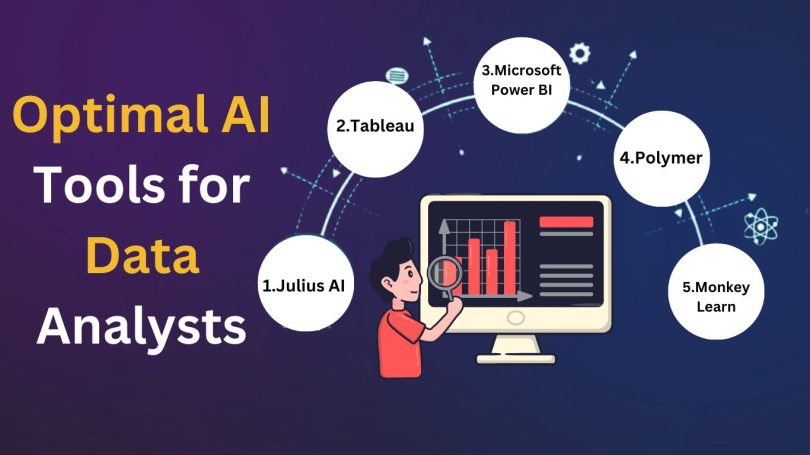A critical function in organizations built on data is the field of data analysis, which allows raw data to transcend into meaningful insights for decision-making. Importantly, a wide range of different tools suitable for both professionals and beginners is already on the market to meet data analytics needs. These tools help with data visualization, analysis and monitoring, which are an outcome of such insights, from which organizational goals are derived.
The field of data analytics is driven by artificial intelligence (AI), which is an energy-efficient and powerful tool in this arena. The AI is used as a transformational technique of information processing, penetrating into large sets of data to reveal important tendencies and patterns that allow improving business processes. Indeed, the combination of AI and data, especially under Predictive AI, allows for building forecasts and analyzing different scenarios to evaluate potential probabilities of success.
AI-related data analysis tools integration is mandated for any company looking to be successful in the data-centric modern setting. Here are the top 5 optimal tools for that purpose
Top AI Tools for Data Analysis:
- Julius AI:
Julius AI is a tool that is regarded as a smart tool for data analytics that can read, understand, analyze and display in both easy and attractive ways. It is a noteworthy feature that its data analytics system allows even people without a data science and/or statistics background to achieve actionable insights. Julius AI enables free style transfer as it supports various data file formats and natural language prompting on the chat page for analysis via conversation.
Key Features:
- Providing direct links from the chat interface to the data sources.
- Spreadsheet analysis in which there are several tabs.
- Tight data access, which guarantees that a user always only has access to its own data.
- The software has an easy-to-use interface that is convenient for minor projects.
2.Tableau:
Tableau is one of the most popular analytics and data visualization software packages that enable users to get the most out of their data. The main thing is its user-friendly nature, eliminating the need for coding knowledge. The application allows the users to prepare reports and publicize them across desktops and mobile devices. It can provide data visualization and analytics to create reports that can be viewed within browsers too or embedded in applications, which could either run on-cloud infrastructure or on-premise infrastructure. VizQL, the underlying query language of drag-and-drop dashboard components is capable of translating these into back-end queries, reducing performance optimization for end users.
Key Advantages of Tableau:
- This provides support for complex computations, data blending and dashboarding.
- Straightforward implementation.
3.Microsoft Power BI:
Microsoft Power BI has emerged as the most effective business intelligence platform providing data visualization to draw insights. It enables data importation from various sources which in turn enables the rapid construction of reports and dashboards. The machine learning models can be developed through Power BI and AI-driven features are used in there to analyze the data more effectually. Power BI is highly implemented where seamlessly integrated features are present such as using native Excel integration and compatibility with Azure Machine Learning for data reporting, visualization and building dashboards specifically in large corporations that already use Microsoft tools.
Power BI’s key advantages:
- Creation of personalized dashboards.
- Secure report publication.
- Limitations of memory and speed are not imposed.
4.Polymer:
Polymer reveals itself to be an enormous threat to Data Analysts, being a powerful AI tool that can swiftly and effectively convert data into a neat, flexible, and powerful database. Just like the other famous AI tools, Polymer stands out in the process of eliminating coding.
With AI, Polymer evaluates data, which contributes towards the user’s understanding of the information without any training procedure. It provides users with an easy way to upload their spreadsheets into the platform and automatically convert them into lean, ready-to-use databases for exploration and insight discovery. Polymer takes pride in being the sole tool that renders users spreadsheets “searchable, intelligent, and interactive instantly.”
Widely embraced by professionals such as data analysts, digital marketers and content creators, Polymer offers the following advantages:
- Powerful AI data transformation tool.
- No coding requirements.
- A more thorough analysis of data and a deeper understanding of the user.
- It makes spreadsheets searchable and interactive immediately.
5.MonkeyLearn:
Last but not least in our list of top 5 AI tools for data analytics is MonkeyLearn; another no-code platform utilizing AI-driven data analysis characteristics to enable its users to process and reorganize their data in a cost efficient way.
It is a host of AI-powered text analysis tools that can quickly process and visualize the data that are based on the users’ preferences. To this end, this platform enables building text classifiers and text extractors that allow for automatic sorting of data according to topics or intent, or the extraction of product features or user data.
With the machine learning technology incorporated in MonkeyLearn, the amount of time spend on manually processing data can significantly reduce.
It should be noted that one of its respected qualities is an automatic data retrieval from incoming tickets, sorting data through keywords, and advanced text analysis which simplifies the process of sorting and processing.
Advantages of MonkeyLearn include…
- Makes for easy cleaning, organization and viewing of feedback.
- No coding prerequisites.
- Formation of automated processes associated with business workflows and analysis of the text.
Final Discussion:
The journey of data analysis is a continuous way, fuelled by constant innovation and evolving tools. This selection of top AI tools serves as a springboard, but the possibilities don’t end here. Embrace the spirit of exploration, venture beyond this list, and discover the ever-expanding frontier of AI-powered data solutions. Remember, the power lies not just in the tools themselves, but in the way you wield them to unlock the secrets within your data.




Leave a Comment